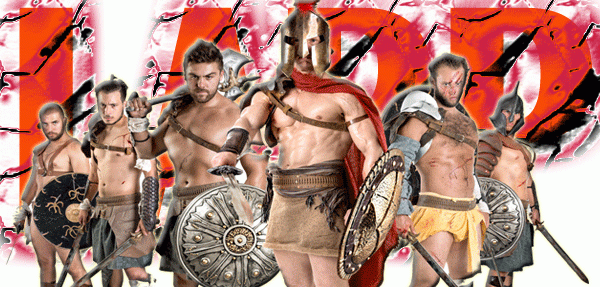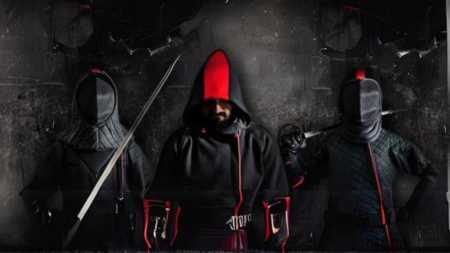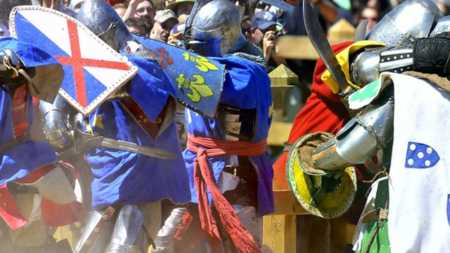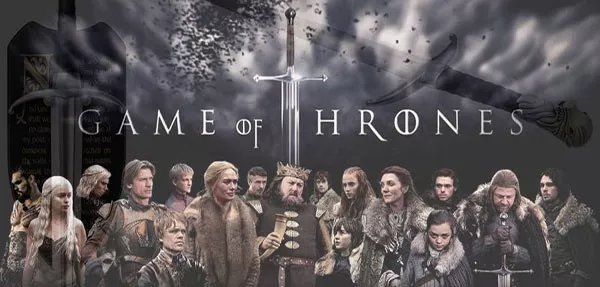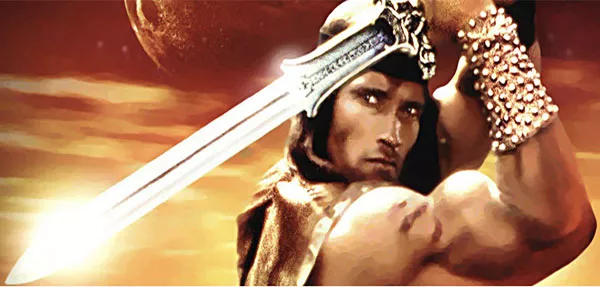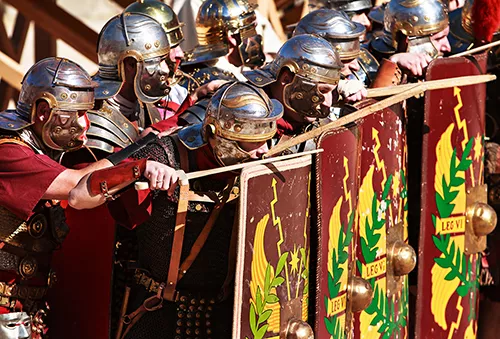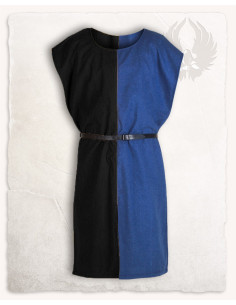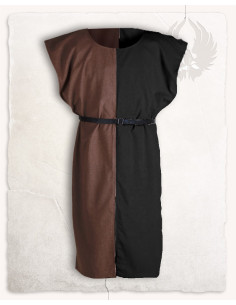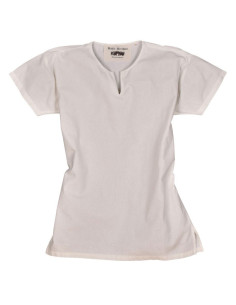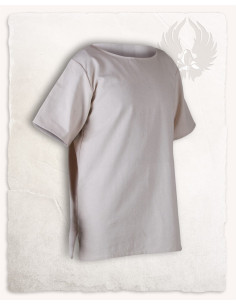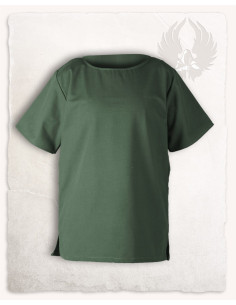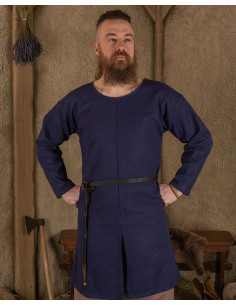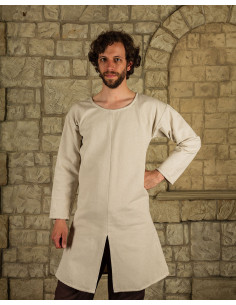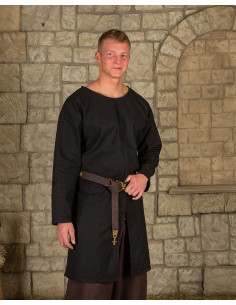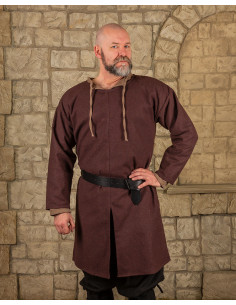Medieval tunics
£16.92
Do you want to give a touch of joy and color to your medieval outfits? The Bipart Frjoerick Medieval Tunic in blue and yellow is a perfect choice. Made from 100% cotton, this tunic is comfortable and durable, making it ideal for any historical re-enactment event. The two-tone blue and yellow design is bold and attractive, making you stand out from the...
£17.58
Awaken the inner warrior in you with our two-tone cream-blue Ignaz model tabard! This impressive tabard is an essential piece of clothing for soldiers and guards. Its cream and blue color scheme gives you a distinctive and elegant look, standing out from the crowd and giving you a powerful visual identity. Constructed from the highest quality materials,...
£17.58
The Ignaz model two-tone black-blue tabard is an essential item of clothing for soldiers and guards. Its unique and eye-catching design makes it easy to identify a close group, even if each member is wearing different types of armor and clothing. Made from a soft and breathable 100% cotton, the Ignaz tabard offers exceptional comfort over long periods of...
£17.58
The two-tone black-brown Ignaz model tabard is the ideal garment for soldiers and guards who wish to mark their unit as a solid force, even with different types of armor and clothing. With various color combinations available, this tabard stands out with its distinctive and attractive design. Made with 100% cotton, the Ignaz tabard guarantees comfort and...
£18.14
Discover the versatility and style of the Sigmund model short sleeve medieval tunic. This simple tunic, made of high-quality cotton, is perfect to complete your medieval outfit and transport you to bygone eras. The short sleeves of this tunic add a modern and fresh touch, ideal for looking comfortable and fashionable during your themed events or in your...
£19.70
Discover the elegant Medieval Tunic in Natural White, Godwin model. A complete and well thought out suit is the key to achieving a striking and authentic look. And for this, both basic garments and additional accessories are essential. -Godwin- is a classic tunic with short sleeves, designed to bring you warmth and comfort on cooler days, especially in...
£19.70
Immerse yourself in the majesty of medieval times with the Godwin model Brown Medieval Tunic. Made of soft cotton, this tunic perfectly combines style and comfort to give you a unique experience. The Godwin model stands out for its classic short-sleeved design, offering you freedom of movement without compromising your style. Whether you're exploring a...
£19.70
Discover the elegant Godwin model green medieval tunic, an essential garment for your medieval wardrobe. The Godwin tunic is a classic short-sleeved tunic that will allow you to add an authentic and distinguished touch to your medieval attire. It's made of wool, which makes it ideal for the colder days of autumn and winter, giving you warmth and comfort...
£21.12
Discover the versatility and charm of the Gadaric model blue cotton medieval tunic! The tunic was not only worn by the Romans in ancient times, but was also popular throughout Europe during the Middle Ages, for both men and women, and underwent constant changes in its cuts and styles. Our tunic -Gadaric- is the perfect base for a wide variety of medieval...
£21.12
Discover the medieval essence with the Gadaric cream cotton tunic from Mytholon! This tunic, apart from being a historical garment worn by the Romans in ancient times, was also a favorite in the medieval period in Europe. The Gadaric tunic is the perfect base for most medieval costumes. Its lower part flares slightly and has central cuts in the front and...
£21.12
Ready to travel back in time to the medieval era? With the impressive Gadaric Tunic in Black Cotton model, you will be able to fully immerse yourself in the spirit of that legendary era. This tunic was not only used by the Romans in ancient times, but also became a favorite garment during the medieval period in Europe. The Gadaric Tunic is a staple piece...
£21.12
Immerse yourself in medieval authenticity with the Godwin model brown medieval tunic. A versatile and popular garment both in Roman antiquity and the medieval period, the tunic has been worn by both men and women throughout the centuries. Our tunic -Godwin- serves as the base for most medieval costumes. With a slight flare at the bottom and center cuts at...

